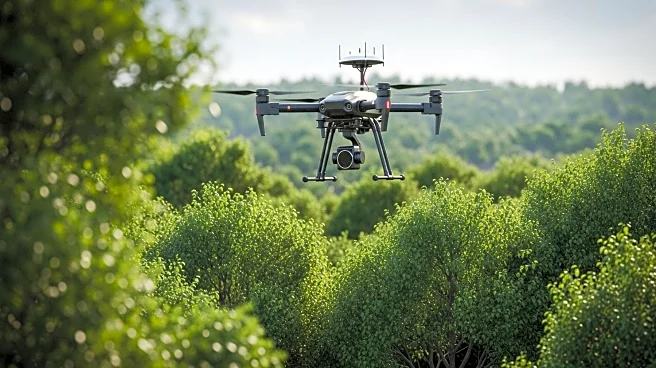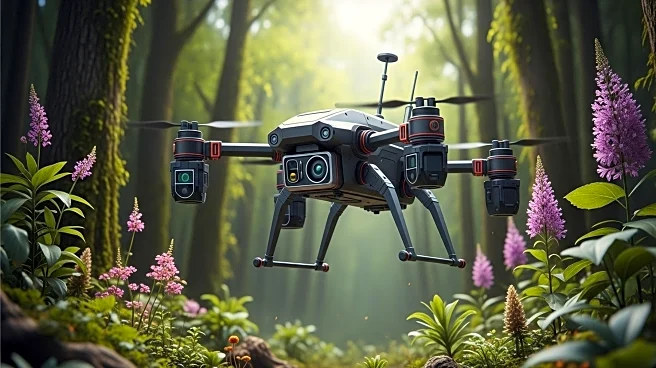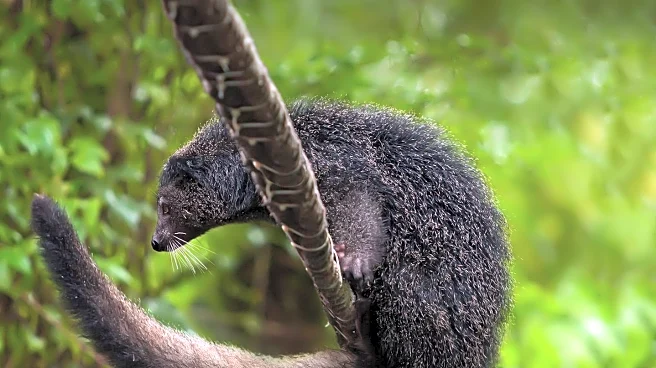What's Happening?
Researchers from the Swiss Federal Institute for Forest, Snow and Landscape Research are utilizing drones and advanced sequencing technology to map insect biodiversity in Swiss meadows. The drones collect environmental DNA (eDNA) from various sources, which is then analyzed to identify numerous species, including those that are endangered or invasive. This method allows scientists to catalog species that are often overlooked, providing a more comprehensive understanding of biodiversity. The use of AI and machine learning further enhances the ability to detect and classify species based on sound and shape.
Why It's Important?
The integration of AI, drones, and eDNA sequencing in biodiversity research marks a significant advancement in the field of taxonomy. This technology enables scientists to monitor ecosystems with unprecedented accuracy and speed, potentially leading to new discoveries and insights into species interactions and ecological dynamics. The ability to identify and track species that are difficult to observe manually is crucial for conservation efforts, particularly in the face of climate change and habitat loss. This approach could transform how biodiversity is studied and managed globally, offering new tools for preserving the planet's ecological heritage.
Beyond the Headlines
The use of technology in biodiversity tracking raises ethical and practical considerations, such as data privacy and the potential for technology to replace human expertise. While AI can process vast amounts of data, human taxonomists remain essential for interpreting results and making informed conservation decisions. The reliance on technology also highlights the need for equitable access to these tools, ensuring that all regions can benefit from advancements in biodiversity research.










